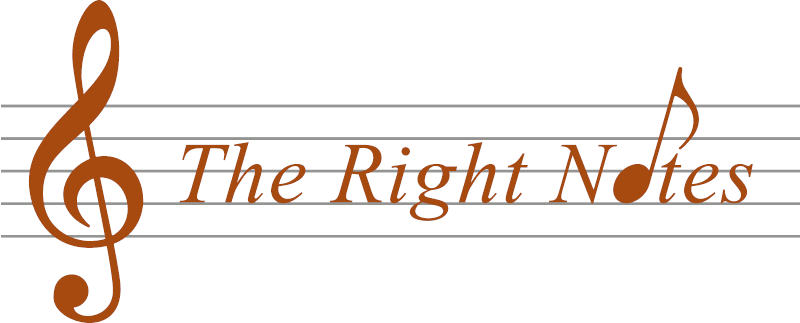The triangle
I have never done a programme that’s quite as ridiculous as this one. For the subject is the triangle – a musical instrument I remember clanging away at when in Primary 1.
Several months ago I mentioned to someone most of us know that I was thinking about doing a programme on the triangle. The response to my tongue-in-cheek suggestion was one of incredulity – it was as if I had told this person that Donald Trump had read a book. And so I felt a bit ridiculous and dropped the idea.
And then, a few weeks ago, I was listening to Respighi’s The Fountains of Rome. Written in 1916, this tone poem was Respighi’s first big success. It offers four musical picture postcards of his homeland.
The first of the four movements, The Valle Giulia at Dawn, depicts a serene pastoral scene with the fresh, damp mists of a Roman dawn and, of all things, a procession of cattle.
And guess what has a key role in what is seriously good music? The triangle. Maybe my idea wasn’t so daft after all. So, let’s hear the opening of Respighi’s The Fountains of Rome.
So, having determined that the triangle would be a theme for a programme, what other music would I feature?
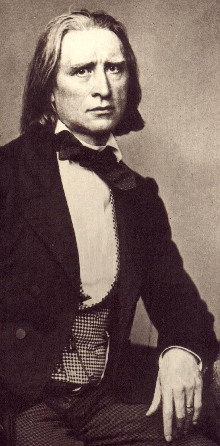
Well, an obvious choice would be Liszt’s Piano Concerto No. 1. February 17th 1857 was an important date in orchestral music. It saw the premiere, with Berlioz conducting, of the first concerto with a movement that opens with the triangle. A music critic at the time, Eduard Hanslick, who was no fan of Liszt, called the piece The Triangle Concerto, and the name stuck.
OK, the big solos in the concerto belong to the piano but Liszt makes plenty of space for the triangle in the third movement. In fact, there have been performances of this concerto in which the percussionist playing the triangle is given plenty of space, right beside the pianist.
So, let’s hear the third movement.
Next we’ll hear a work by a composer who may not be familiar to some of you: Hans Rott.
Born in Vienna in 1858, Rott studied with Bruckner and for a while shared a room with Mahler, who described him as a “musician of genius”. Rott was 20 when he wrote his Symphony in E Major, which wasn’t premiered until 1989.
You are going to hear the finale of that symphony. I read a review of a recording of it that said that “somebody should have confiscated the triangle”.
Here is part of another review:
Most excited of all is the triangle, symptomatic of the style of the symphony. Once Rott starts triangling, he doesn’t stop. The instrument makes itself heard during well over a third of the symphony, ringing for more than half of the last two movements — for over 600 bars, out of fifteen hundred — and most of that at or above fortissimo. A percussionist who sees this as the glory moment of his career could create an effect quite like that of a doorbell being stuck. The conductor is well advised to cold-heartedly rein him or her in.
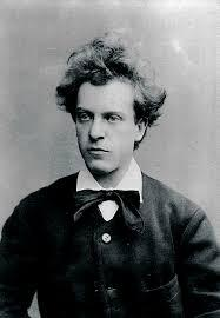
So, here’s the first movement of Hans Rott’s Symphony in E Major.
There’s a sad story about Hans Rott. He went mad and in 1880 was committed to an asylum after pointing a revolver at a passenger on a train claiming that Brahms was trying to blow the train up. He died of TB at the age of 26 after several suicide attempts and was undoubtedly a composer of great promise.
I want to conclude this video with a piece you might not want to hear again but, in the interest of art and the triangle, here we go. You are going to hear the Overture to Abu Hassan, by Carl Maria von Weber. Based on a story on One Thousand and One Nights, Abu Hassan is a comic opera written in 1811.
The overture is, well, not to my taste but I have chosen it because it’s use of the triangle is typical for classical music of the time written in what was known as the Turkish Style – that is to say, the music of Turkish military bands, specifically the bands of the Janissaries, the Ottoman empire’s elite infantry.
Haydn, Mozart and Beethoven all wrote music with this influence but hear Weber takes it to the limit. This music uses percussion instruments not commonly used in orchestras at the time – bass drums, cymbals and the triangle.
So, this is the Overture to Abu Hassan.
Imagine for a minute that I am a concert percussionist and I have applied for a position with a major orchestra. I am invited to go for an audition and am sent a 74-page document headlined “Requirements for Audition”. This document lists the excerpts of music I am required to play at the audition. For example, I have to play a bass drum excerpt from Stravinsky’s The Rite of Spring; something with cymbals from Tchaikovsky’s 4th Symphony; a tambourine part from Chabrier’s Espana; a glockenspiel excerpt from Debussy’s La Mer, and so on. I will also have to play a handful of excerpts featuring the triangle; from Britten’s Young Persons Guide to the Orchestra; Bizet’s Carmen Suite; Dvorak’s Slavonic Dances and Rachmaninov’s Symphonic Dances.
The document I received included the scores for these excerpts and details of the instruments I was to play (although I am allowed to use my own triangle).
All this actually happened although obviously I wasn’t involved. If you saw the first video you will know that I can only play Primary 1 triangle.
I found this scenario online. The position was sub-principal percussion with the New Zealand Symphony Orchestra and the audition took place in March 2019. I’ve no idea who got the job but whoever it was he or she doubtless excelled in playing excepts from Dvorak's Slavonic Dances. Rather than featuring the excepts suggested, let's hear an entire piece: Slavonic Dance No. 10.
Dvorak wrote a set of 16 pieces collectively known as his Slavonic Dances, in 1878 and 1886, originally for piano four hands. No 10 is a magical waltz that somehow superimposed beauty and sadness. Here it is.
Let's talk some more about the triangle. Usually made of steel but sometimes of copper, it isn’t quite a triangle. One of the angles is left open, with the ends of the bar not quite touching. Having an open corner keeps the instrument from having a specific pitch. Generally, its outline is of an equilateral triangle but earlier instruments were non-equilateral isosceles triangles.
I thought I mastered the triangle in primary school but I fear I didn’t. It’s by no means a simple instrument to play. Controlling the volume can be tricky. Sometimes, percussionists will use knitting needles for very quiet notes. A wooden beater can be used to give a duller tone. And how the triangle is held can modify the tone.
It’s been said that Brahms was the first composer to use the triangle in a symphony. He wasn’t. It appears in Beethoven’s 9th, in Schumann’s 1st, Haydn’s 100th and goodness knows how many more symphonies featured the triangle here and there.
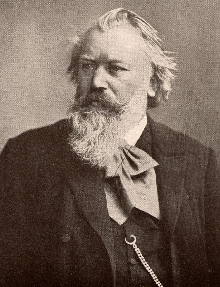
However, the instrument does make a significant appearance in the third movement of Brahms’ 4th, in some performances somewhat modestly and other times with some prominence. Let’s hear it now and reflect that here we have a 54-year-old genius writing music for a triangle.
Some composers have tended to ignore the triangle completely; some like Mozart and Beethoven used it sparingly but some, such as Mahler and Berlioz, seemed to embrace the instrument.
I have two pieces by Berlioz that feature the triangle. The first comes from the third act of his opera The Damnation of Faust. Which was premiered in 1846. It’s been said that this piece, Menuet des Follets, is one of the most original minuets ever written. It starts in a fairly conventional way but then meanders off in all sorts of unexpected directions, stopping and starting as it goes.
I would have liked to play the adagio from Harold in Italy by Berlioz. It features the triangle to some effect but, sadly, it runs for the best part of a quarter of an hour – too long for this programme.
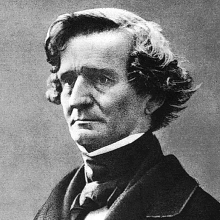
And so I have decided instead to feature the Roman Carnival Overture, written by Berlioz in 1844. Most of the music for the overture comes from Berlioz’s 1838 opera Benvenuto Cellini, which was a spectacular flop. However. This overture, with its salvaged music, was an immediate hit. I wonder if the triangle had anything to do with that.
Featured composers:
Featured genres:
The triangle playlist
Each Spotify track has been chosen specifically; however, the corresponding YouTube videos may be performed by different orchestras.
